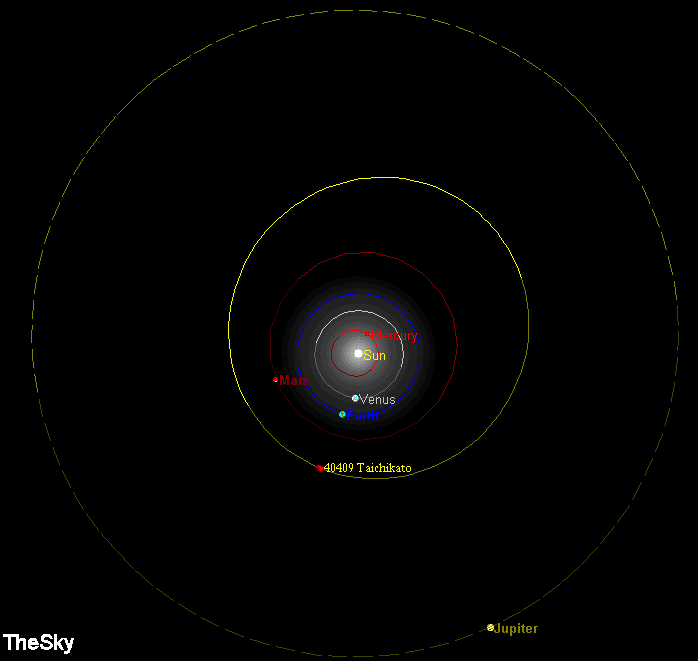
The observation of minor planets is one of the main activities at Bellatrix Astronomical Observatory. Over the years, I've discovered several new bodies while observing other specific targets or imaging some fields near the ecliptic. In 1999 I had a good hunting season, especially at the end of the summer. That September, in fact, I discovered four of those "rocks" in about ten days: I really worked hard to confirm them and to assure a good follow-up, in order to have an orbit good enough to make them recoverable at their next opposition. This is needed as an asteroid is definitely numbered and named only when its orbit is well-known. The most interesting aspect of the story is that the discoverer can propose a name for her/his object once numbered... a nice opportunity to award people who are doing or did something "special". But the object needs of a good coverage before to be numbered. Today, most of the follow-up work is the "by-product" of the activity of many high-efficiency surveys devoted to the search of the Near-Earth Objects (NEOs). Also, there are old plates where sometimes it is easy to locate the image or the trail of these objects, with a valuable contribution for the final numbering.
On Sept. 6, 1999, I was imaging some fields in Acquarius, just in opposition, when I saw a moving object, brightening around mag. 17. A quick check allowed me to conclude that it was unknown. As one needs to observe a potentially new object on two nearby nights to get a provisional designation, the following evening I was tracking again the asteroid. Once reduced the frames, having the astrometry from both the observing sessions, I sent all the data to the Minor Planet Center. In few hours, they responded to me with the provisional designation for that body, 1999 RS2. I was continuing to submit astrometric data in the next days, when the MPC was able to link my object to 1998 FX144, for which an orbit was not available. Fortunately, I kept the discovery credit. Such an identification by G. Williams, was of great help for numbering. Thanks to the indirect contribution of the big surveys, finally 1999 RS2 was numbered: (40409) - 1999 RS2.
At that point, on June 2002 I decided for the name and I submitted to B. Marsden my proposal to name (40409)-1999 RS2 after Taichi Kato, astronomer at Kyoto University, a very dear friend and colleague. The readers familiar with the VSNET service know very well the work Taichi Kato and his collaborators are doing to keep their service at the higher, excellent level, providing a precious tool to the astronomical community. In addition, his contribution to the study of the cataclysmic variables (CVs) is very impressive and presented in many scientific papers. While this is really enough to justify my proposal, there is another, personal and important reason for my decision. I joined the VSNET web service early in 1997, when my experience on variable stars was near zero. In few time, I was definitely fascinated by the arguments discussed by the VSNET users and, just for coincidence, I discovered a new variable star near M27 (the "Dumbbell" nebula). To say it shortly, if I begun studying variable stars it was due to my membership to the VSNET and to the assistance provided by Taichi, who also helped me (with other astronomers) dealing with the variable I discovered. Over the recent years, a very enjoyable collaboration has been established between Taichi, me and his colleagues. One of the most memorable projects has been the coverage of the spectacular 2001 superoutburst of WZ Sge, still very fresh in my mind.
Congratulation, Taichi! I'm always looking forward to the next (super)outburst to share the wonders of the night sky.
Gianluca
The diagram above shows the asteroid (40409) Taichikato along its orbit, on the day of its discovery (Sept. 6, 1999). An animation is also available, with the original discovery images: the asteroid moves near the center of the images..